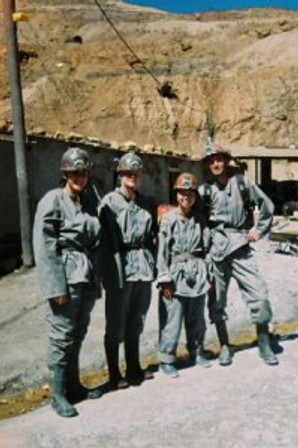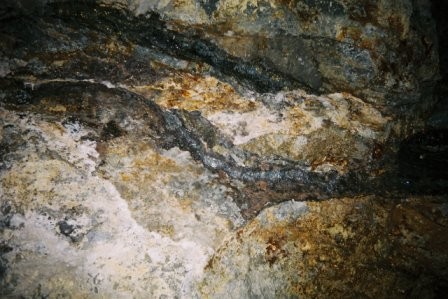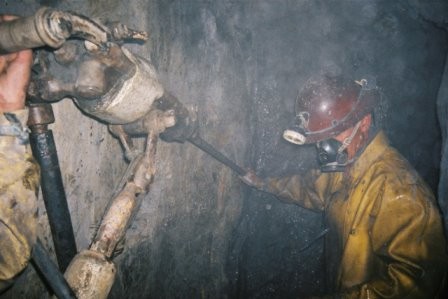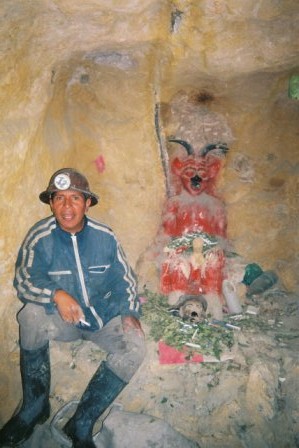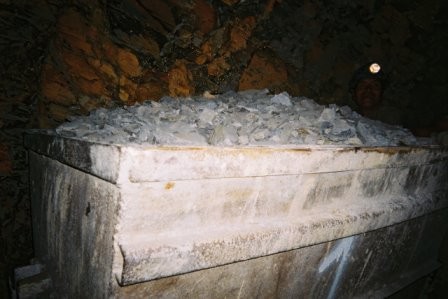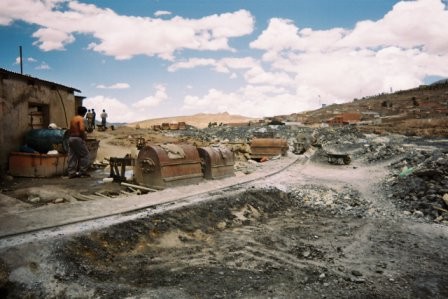Ocean of Bolivia
Wednesday, November 30th, 200529 November 2005 (Tuesday) – Potosi to Uyuni, Bolivia
Once again, I was surprised at the number of sacks of goods at the bus office for the bus going to Uyuni. Can we really pack all these on top of the bus? When the bus finally pulled up, the tourists’ backpacks were heaved up there first, followed by the campesinos’ goods. Yes, somehow, by crook or by crook (yes…), everything made it up there, behind or along the aisle.
We were travelling at a very high altitude now. The scenery all over were undulating mountains as far as the eyes could see. There were green mountains, deserts spotted with patches of absolute green or bursts of highland licho grass. At some places, the moutains turned all rocky, with HUGE boulders, split and eroded nearly to the end, hanging precariously above. Ah, so this is how the Bolivians protesters do the bloqueos. Just shove one of these down the mountain road and all access is cut off.
Peggy, whom I met a couple of days ago in Tarabuco, had told me about 10, 12 days ago, when she was in La Paz, there had been a bloqueo between La Paz and Oruro and she was stuck there for 2 days. Wow, I had left La Paz merely 5 days before that. Thank goodness, I was lucky. Now, as I read from the borrowed newspaper from the guy next to me, I learnt that there was a short bloqueo in Sucre just yesterday and yet another renewed bloqueo between La Paz and Oruro. Again, I heaved a sigh of relief. I was now heading towards Uyuni, my last stop in Bolivia and onwards to Salar de Uyuni. I doubt anyone would be able to block the largest salt pan in the world, so I should be able to leave Bolivia on time, before my 30-days run out.
I continued to admire the scenery from point to point as I glanced up from reading my book. I soon stared in awe at the distant horizon. Yes, we were so high and so far from the mountains that I could actually see the horizon now. I was just thinking, wow, this feels like being out in the ocean, a very high ocean… when I turned slightly to my right and spotted Salar de Uyuni, a immense white plain, glistening in the afternoon sun. Now, this IS truly the ‘high ocean’ of Bolivia. Incredible!!
Uyuni is not really a town to stay to er… appreciate the food or admire the architecture. It really felt like a deserted frontier town, basking under the fierce sun. There was hardly any trees, any greenery at all. There were hardly any cheap places for food either. Everything here existed for the sole purpose of serving tourists. So, there are loads of travel agencies, hotels and gringo restaurants serving food at twice or triple the price of everywhere.
Tourists just come to Uyuni, find a tour and get out, pronto.
I tried to search for the market for some cheap local food, but no luck. Anyway, I also figured perhaps, I should not risk my stomach at this point, especially since I would be leaving for the salt pan for 3 days tomorrow. Pizza will do.

